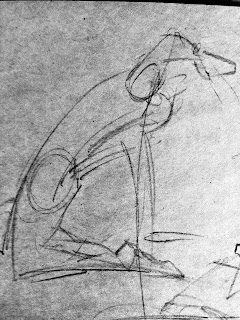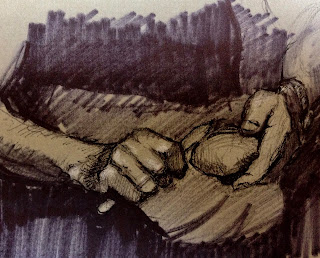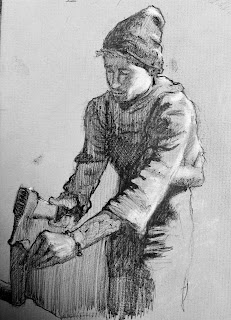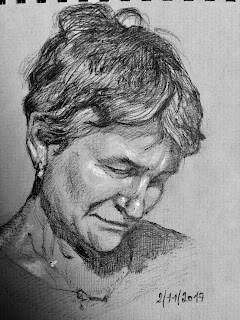Here I did a blog post about one of the greatest painters of all the times in Czech Language. I did it mainly because there's not so much information on the man in Czech. But there was a request by one of my friends from UK, Pat, to make it in English so here it is. There's a myriad of info about Sargent but this could be considered my personal view on his work and his approach and why I think he was so invaluable.
I mentioned in the Czech version that a lot of Czech people have a good understanding of two well known artists that came from Czech Republic which was Alphons Mucha and very prolific illustrator Zdenek Burian, but I will mention them in detail in the future.
John Singer Sargent was born on 12th of January 1856 and died on 14th of April 1925. An american painter which had earned his formal classical art education in Paris in the famous Ecole des Beaux-Arts. He later became one of the most admired portrait painters in the high society in Europe as well as in USA. He was a pupil of Carolus Duran. John is considered to be a "Brown school painter" who painted mostly behind closed door - indoors, where there's muted colours of any given object, emphasising more value changes and so called Chiaroscuro (difference between light and shadow)
After many years of making portraits of American, England and Parisian high society John became little bit sick of doing his craft. I think He had started to hate commissions so he decided then to travel more and to grab his stuff outside. He used oils outside as this was his primary medium but he oftentimes switched to watercolour for its rapid nature and easy to carry properties. The result was a impressionistic usage of colours - more vivid due to the sunshine outside, without loosing sense of three dimensionality of a brown school painter. His outdoor work I dare to say is maybe twice that better than any of the famous impressionistic painters as we know them (Degas, Monet etc.) - it is mainly due to the Sargent's stellar drawing skills and his sense for Value and structure that he was able to maintain in his outdoor work when applying very truthful colours the same way impressionist did.
Here's some examples of John's work with my commentary with some explanation to make sense (or justify) about my commentary above:
This is to be considered as an oil sketch. Keep in mind that artist of these times seldom used photography. Which was actually a good thing for honing their skills which John represents strongly here. It was at most one hour sketch done rapidly due to the fact that model looks rather annoyed to stand in the wind :-) Painting is a typical example of the freshness of John's brush strokes and a strong connection of his brown school training and impressionistic colours.
I'm intentionally picking out an unfinished work, because they can reveal the process of painting itself the best. This sketch in oil indoors is a classic example of the freshness of brushstrokes as we spoke about. He follows the form with his brushstrokes in the lit areas and simplifies shadows to pronounce the focal point (the eyes of the sitter). As you can see to emphasise the focal point even further John uses more simplified brushstrokes that borders with abstract art on the outer sides of a painting to literally nudge us to look the subject in the eyes.
This is a gorgeous lecture on composition by John. If you squint at 50 precent you can see nice abstract shapes that underline the whole painting - the black stripe made out of musicians, focal point of the garment of the dancer. Dancing shadows on the wall are just cherry on top which finishes the whole orchestra.
Autoportrait. This is an
example of John's style that he used throughout his carrier for portrait commissions. Indoor painting with strong (light vs. shadow) Chiaroscuro contrast. The fresh and effortless effect is just an illusion. It actually exists a myriad of letters and notation from John himself how hard and gruesome the process sometimes was. More on that notations and even more other information could be found in a great post by Howard Lyon from muddy colours
And finally his alligators having an afternoon nap - maestro work with watercolour. This is exactly an example (and you can find another billion of others :-) ) why I think John Singer Sargent surpassed all the impressionistic movement. Reason being that he was able to masterfully combine his brown school education (drawing, strong sense for chiaroscuro) which most of the impressionists lacked and his sense for impressionistic colours. His quality and handling of colours was up to par with the French movement.
Simply put Sargent was just a master. One of the kind. This is not to say that he was the best. There's no absolute in art I think. But he was one of the best in what he was doing. If you would have anything in mind regarding my take on this prodigy I would be more than happy to answer possible question or to have a discussion.
Sincerely Pete.

















































